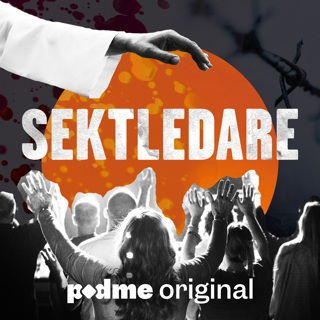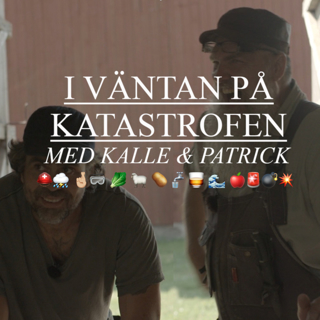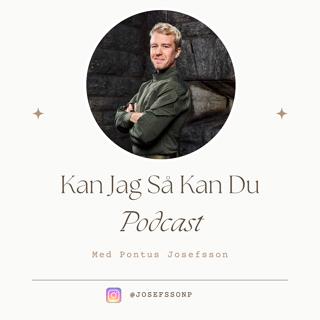
Ep. 177 Doctors and Litigation: The L Word with Dr. Gita Pensa
Emergency medicine physician and podcast founder Dr. Gita Pensa and our co-hosts Dr. Chris Beck and Dr. Aaron Fritts discuss methods of navigating malpractice lawsuits, maintaining professional identity, and prioritizing mental health. --- CHECK OUT OUR SPONSOR RADPAD® Radiation Protection https://www.radpad.com/ --- EARN CME Reflect on how this Podcast applies to your day-to-day and earn AMA PRA Category 1 CMEs: https://earnc.me/Mfo9EF --- SHOW NOTES In this episode, emergency medicine physician and podcast founder Dr. Gita Pensa and our co-hosts Dr. Chris Beck and Dr. Aaron Fritts discuss methods of navigating malpractice lawsuits, maintaining professional identity, and prioritizing mental health. Dr. Pensa starts by outlining her personal experience with a twelve year-long malpractice suit, which inspired her to start her own podcast, “Doctors and Litigation: The L Word.” She says that despite the fact that most physicians will face lawsuits in their career, there is a current lack of physician-centered educational resources over malpractice litigation. To combat this, she encourages physicians to share their experiences and learn from one another. The doctors walk through major steps of a lawsuit, starting with the process of getting served with papers. Dr. Pensa emphasizes that it is important to recognize that this step could be used as the first tactical move in a lawsuit and designed to make physicians feel uneasy. The next step after getting served should always be to call the insurance carrier and have them start the process of initiating a claim. Dr. Pensa strongly advises against accessing or editing patient charts after getting served, as these actions are recorded in the EMR and can be used against the physician. Finally, Dr. Pensa discusses the process of deposition and how it serves as both a fact-finding mission and a strategic way to distort a physician’s words. She recommends practicing with lawyers to answer deposition questions clearly and concisely. Throughout the episode, the doctors highlight the importance of maintaining one’s mental health during the litigation process. They advise listeners to seek support from friends, family, colleagues, and professionals, as long as the specific details of the case are not discussed. To close, Dr. Pensa reminds the audience that malpractice lawsuits usually have financial motivations, and they may not be an accurate representation of a physician’s competence or compassion for patients. --- RESOURCES Doctors and Litigation: The L Word: https://doctorsandlitigation.com/ “The Defendant” by Sarah Charles: https://www.amazon.com/Defendant-Sarah-Charles/dp/0394746635 “Adverse Events, Stress, and Litigation” by Sarah Charles: https://www.amazon.com/Adverse-Events-Stress-Litigation-Physicians/dp/0195171489 “How to Survive a Medical Malpractice Lawsuit” by Ilene Brenner: https://www.amazon.com/How-Survive-Medical-Malpractice-Lawsuit-ebook/dp/B005C65X2M “When Good Doctors Get Sued” by Angela Dodge and Steven Fitzer: https://www.amazon.com/When-Good-Doctors-Get-Sued/dp/0977751104
7 Jan 20221h 2min

Ep. 176 Dealing with Complications: Advice From a Mentor with Dr. David Ball
Dr. Aaron Fritts talks with mentor Dr. David Ball about dealing with complications throughout our professional career, including why physicians have trouble with it, and advice for what not to do when they happen. --- EARN CME Reflect on how this Podcast applies to your day-to-day and earn AMA PRA Category 1 CMEs: https://earnc.me/al4Ow0 --- SHOW NOTES In this episode, interventional radiologist Dr. David Ball and our host Dr. Aaron Fritts discuss the inevitability of unforeseen procedural complications, strategies to navigate patient and family communication, and lessons to take away from these experiences. To start, Dr. Ball recognizes the difficulty involved with addressing complications that cause patient injury, damage to physician reputation, and financial consequences. He emphasizes that it is therapeutic to speak about these outcomes with trainees and colleagues for learning purposes. Dr. Ball shares complications stories from his career and describes key takeaways from each. He describes the benefits of forming good relationships with patients and families prior to starting the case, performing a thorough check of all risk factors before the first puncture, and taking responsibility for complications that arise during the case. Finally, he discusses the balance between taking accountability for complications and being vulnerable to malpractice lawsuits. --- RESOURCES BackTable Episode 154, Complications Survey Results (Podcast): https://www.backtable.com/shows/vi/podcasts/154/discussing-the-complications-survey-results BackTable Episode 154 (Video): https://youtu.be/MuRISnu4gKU
3 Jan 202229min

Ep. 175 Treating Below the Knee Calcium with Dr. Kumar Madassery
CLI fighters Dr. Kumar Madassery and Dr. Sabeen Dhand discuss their approach to treating calcified arteries below the knee, including looking at newer technologies and choosing the appropriate device to effect real durable change to the calcified wall. --- CHECK OUT OUR SPONSOR Shockwave Medical https://shockwavemedical.com/?utm_source=BTK-Backtable-Podcast&utm_campaign=Backtable-Podcast --- SHOW NOTES In this episode, interventional radiologist Dr. Kumar Madassery and our host Dr. Sabeen Dhand discuss atherosclerosis in tibial vessels below the knee and devices for atherectomy, angioplasty, and dissection repair. While non-invasive imaging for calcium is still lacking, Dr. Madassery encourages operators to look for calcium on X-ray and ultrasound. He believes that visualization with ultrasound will improve if there is greater collaboration and standardization across all operators. Next, Dr. Madassery differentiates between intimal and medial calcifications. He notes that medial calcifications usually present as “railroad tracks” in diabetic and end-stage renal failure patients, while intimal calcifications lead to plaque ruptures. Each type is distinguishable with the use of intravascular ultrasound (IVUS). Dr. Madassery walks through his approach to calcified lesions. He says that using angiogram to identify whether a lesion is stenotic or occlusive is a crucial first step. He also emphasizes the importance of having a wire escalation strategy. The doctors highlight orbital and laser atherectomy, scoring balloons, and intravascular lithotripsy (IVL). Finally, Dr. Madassery describes his perspective on arterial dissection, a common complication of balloon angioplasty. The decision to treat dissections is dependent on the operator, but he gives advice on weighing the pros and cons of treating. He speaks about the advantages of using the self-expanding Tack system to stent only specific problematic regions.
27 Dec 202138min

Ep. 174 Making the Switch: Transitioning from Private Practice to Academics with Dr. Amy Taylor
Dr. Aparna Baheti and Dr. Amy Taylor discuss the considerations around returning to academic interventional radiology after starting a career in private practice. --- CHECK OUT OUR SPONSOR RADPAD® Radiation Protection https://www.radpad.com/ --- EARN CME Reflect on how this Podcast applies to your day-to-day and earn AMA PRA Category 1 CMEs: https://earnc.me/v6RYgR --- SHOW NOTES In this episode, interventional radiologist Dr. Amy Taylor and our host Dr. Ally Baheti discuss factors that can facilitate the transition from private practice to academic medicine. Dr. Taylor speaks about the course that her career has taken since she completed her fellowship. She highlights contrasts between the private and academic spheres, noting that each allows freedom in different aspects of the job. She encourages IRs to take sufficient time to evaluate their culture fit in their current roles before deciding to transition. When navigating her transition back into academic medicine, Dr. Taylor notes that her former fellowship attendings provided strong support and advice. She advocates for normalizing conversations about career changes. --- RESOURCES SIR Foundation Research Grants: https://apply.sirfoundation.org/
20 Dec 202126min

Ep. 173 IR Residency Interviews: Tips from a Program Director with Dr. Luke Wilkins
In this Trainee Focus episode, guest host Sunny Murthy talks with Universtiy of Virginia program director Dr. Luke Wilkins about what it takes to become an interventional radiology resident, including tips on finding the right program fit and how to crush the interview day. --- CHECK OUT OUR SPONSOR RADPAD® Radiation Protection https://www.radpad.com/ --- EARN CME Reflect on how this Podcast applies to your day-to-day and earn AMA PRA Category 1 CMEs: https://earnc.me/bNit7I --- SHOW NOTES In this episode, University of Virginia interventional radiology and diagnostic radiology program director Dr. Luke Wilkins and our guest host Sunny Murthy discuss the factors that contribute to a successful IR residency application and interview. With the USMLE Step 1 exam moving towards a pass/fail system, Dr. Wilkins emphasizes that it is important for applicants to distinguish themselves by finding ways to show dedication to the field of IR. We also discuss the benefits of having exposure to different programs prior to the application cycle, whether it is through rotations, virtual communication, or SIR involvement. Dr. Wilkins encourages each applicant to recognize programs that fit best with their personality and learning style. He offers his perspective on good program characteristics to look for, such as flexibility in career preparation and wide case variety. Finally, Dr. Wilkins speaks about how authenticity in the application process can maximize benefits for both applicants and programs. --- RESOURCES SIR Residents, Fellows, Students Section: http://rfs.sirweb.org/
17 Dec 202129min

Ep. 172 Treating Above the Knee Calcium with Dr. Bryan Fisher
CLI fighters Dr. Bryan Fisher and Dr. Sabeen Dhand discuss their approach to treating calcified arteries above the knee, including looking at newer technologies and choosing the appropriate device to effect real durable change to the calcified wall. --- CHECK OUT OUR SPONSOR Shockwave Medical https://shockwavemedical.com/?utm_source=ATK-Backtable-Podcast&utm_campaign=Backtable-Podcast --- SHOW NOTES In this episode, vascular surgeon Dr. Bryan Fisher and our host Dr. Sabeen Dhand discuss treatments, intravascular ultrasound (IVUS), and device selection for calcified lesions above the knee. First, Dr. Fisher discusses common risk factors for above the knee calcifications, including diabetes, end-stage renal disease, and smoking. In his diagnostic workup, he highlights the benefits of using CT for showing atherosclerotic disease, as well as IVUS for viewing intimal and medial calcifications. With intimal calcifications, Dr. Fisher prefers to use an atherectomy device. For severely stenotic regions, he notes that orbital atherectomy can clear the way for other devices to pass through. After atherectomy, he usually performs IVUS to identify the luminal gain and assess the degree of plaque modification. The doctors talk about new frontiers in technology such as intravascular lithotripsy, a technique that has been modified from urological treatment. The intermittent delivery of focal energy cracks calcium deposits and minimizes the risk of vessel rupture. Additionally, they discuss optical coherence tomography and how it can assist in visualizing the results of lithotripsy. Overall, Dr. Fisher believes that angioplasties will likely cause injury to intimal walls, but these effects can be minimized by knowledge of vessel architecture and proper device selection. --- RESOURCES The Surgical Clinic: https://thesurgicalclinics.com/ Shockwave Intravascular Lithotripsy: https://shockwavemedical.com/clinicians/international/peripheral/
13 Dec 202133min

Ep. 171 The Making of a “Good” IR with Dr. Lola Oladini
Dr. Eric Keller talks with Dr. Lola Oladini from Stanford Medicine Department of Radiology about what makes optimal training for Interventional Radiologists, including discussion on the variety of strengths of programs across the country, balancing diagnostics with procedural training, and what it means in being a "clinical IR". --- CHECK OUT OUR SPONSOR Medtronic Chocolate PTA Balloon https://www.medtronic.com/peripheral --- EARN CME Reflect on how this Podcast applies to your day-to-day and earn AMA PRA Category 1 CMEs: https://earnc.me/bOp6I7 --- SHOW NOTES In this episode, interventional radiology residents Dr. Lola Oladini and Dr. Eric Keller discuss ideas to strengthen IR/DR residency training in multiple aspects, including clinical exposure, practice building, and personalization for the learner’s career goals. Dr. Oladini shares preliminary results from her research, which consisted of interviews with various IR stakeholders. She highlights common themes on what interviewees value in a residency program: longitudinal patient care experience, practice-building education, exposure to interdisciplinary collaboration, exposure to clinical decision making, strong diagnostic radiology training, and graduated autonomy. She also shares common concerns that interviewees had about the disconnects between clinical education in residency training and real world practices that may not have the same clinical focus. Additionally, residents spoke about balancing the paradigm between wanting to get early IR exposure and training to be excellent diagnostic radiologists. Finally, the doctors discuss different interpretations of the commonly used term, “clinical IR,” and brainstorm ways that residency programs can involve trainees in patient-centered initiatives and cross-speciality relationship building. --- RESOURCES SIR Residency Essentials: https://www.sirweb.org/learning-center/learning-center/residency-essentials-and-fundamentals/residency-essentials/
6 Dec 202139min

Ep. 170 Operate With Zen with Phil Pierorazio
Dr. Aditya Bagrodia and Dr. Aaron Fritts talk with Dr. Phillip Pierorazio from Penn Urology about his Operate with Zen podcast and tips for surgeon wellness. They cover Dr. Pierorazio's motivation for starting a wellness podcast, preventing physician burnout, achieving work-life balance, and managing healthy competitiveness. --- EARN CME Reflect on how this Podcast applies to your day-to-day and earn AMA PRA Category 1 CMEs: https://earnc.me/A9shzj --- SHOW NOTES In this crossover episode of BackTable Urology and BackTable VI, Dr. Aaron Fritts and Dr. Aditya Bagrodia speak with Dr. Phil Pierorazio about surgeon wellness and his mindfulness podcast, Operate with Zen. First, Dr. Pierorazio discusses his motivation for starting the Operate with Zen podcast. During the pandemic, he crafted a new goal for himself: to be happier in surgery. He defines mindfulness as taking a moment to enjoy his livelihood and being more present at work and at home. Next, the doctors tackle the topic of physician burnout. All three doctors agree that burnout is not a badge of honor and are glad that the culture of medicine is progressing towards one that reprimands toxic attitudes early in training. As for managing work-life balance, Dr. Pierorazio explains that once he started creating boundaries for his work schedule, he expanded what he could do. He encourages other surgeons to trust that their colleagues can handle emergencies, even if the patients are not their own patients. Collaboration with colleagues also leads to healthy competitiveness, a concept in which physicians stop comparing themselves to each other and instead celebrate their fellow colleagues. Dr. Pierorazio recommends channeling toxic competitive energy towards a drive to better a broader institution and patient care. Finally, Dr. Pierorazio shares two of his personal tips for wellness. He avidly journals each day in order to exercise gratitude, reflect on his day, and set priorities for the next day. Finally, he emphasizes the importance of finding a wellness mentor or counselor in order to expand surgeon wellness and talent.
3 Dec 202149min





















